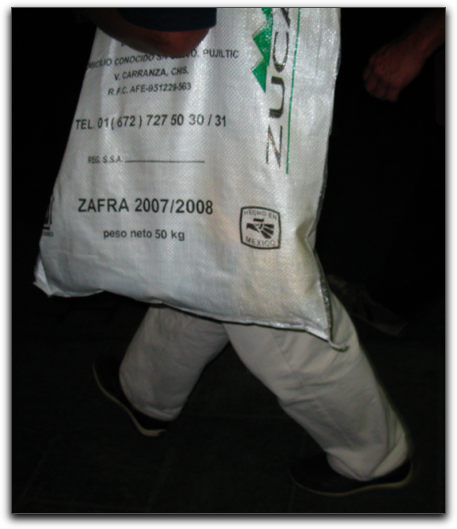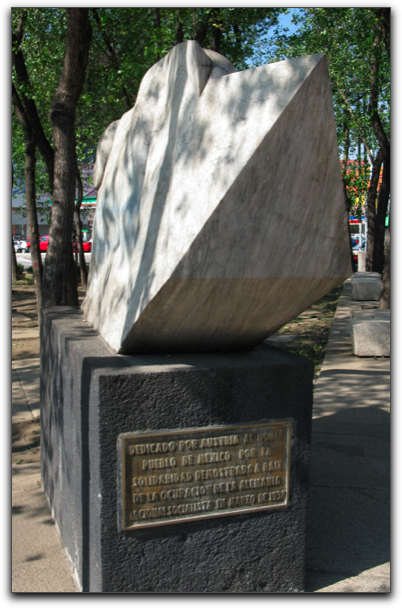
Luis had suggested a number of spots in downtown Mexico City to eat. We hit Café la Havana first thing for breakfast. We had a simple Mexican meal, skipping the postre, the cookies after the eggs. The photos on the wall depicted scenes of Havana in the early '50s. Luis had mentioned that he remembered journalists spending their mornings at the café drinking their coffee and submitting their stories. When we arrived, somewhat late in the morning, the café was sparsely populated. One woman, about our age, sat nearby reading a newspaper with a pen or pencil and received and/or made a couple of phone calls. The hot chocolate there was very sweet, not as flavorful as Luis'. A young couple from Antwerp sitting near us was intrigued that we had visited every chocolate museum in Belgium.
It turned out that most museums were closed on Monday. We used the opportunity of a beautiful sunny warm day to walk down La República, the main broad boulevard to the Chepultepec Park.
Along the way we saw this monument:

Dedicado por Austria al noble pueblo de México por la solidaridad demostrada a raíz de la ocupación de la Alemania Nacionalsocialista en Marzo de 1938.Dedicated by the people of Austria to the noble people of Mexico for the solidarity shown following the occupation of the National Socialist Germany in March 1938.
This monument, simple and understated as it is, stands as a companion piece to one we had seen in Vienna in 2006. Along the way, we were pleased to see other monuments and especially a series of inventive benches/sculptures spaced along the promenade. More temporary and timely were the many crèches in different styles.
We turned left into the Zona Rosa and made our way to Genova. This, the main street through the Zona Rosa, felt much like a big international mall with the usual American chain fast food shops (the tourist promotional lit says that this is the heart of the "gay enclave")
Continuing along, we came to a big circular underpass which led us to the Condesa area of town where we passed an Apple store. (Has Mark documented every Apple related phenomenon he's experienced on our travels? Maybe.)
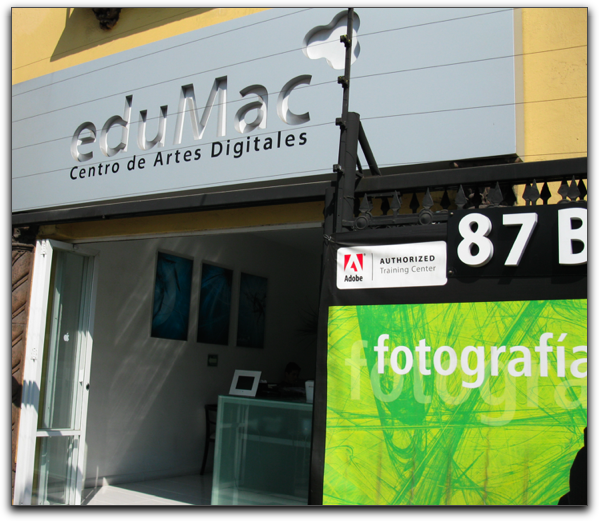
We stopped for tea in the neighborhood. The cafe sold "art" photographs displayed on the walls. One of those Mark suspected to be all about chocolate, by an artist named Claudio Zorrilla called Piedra en el camino 1 on sale for 5,800 pesos.
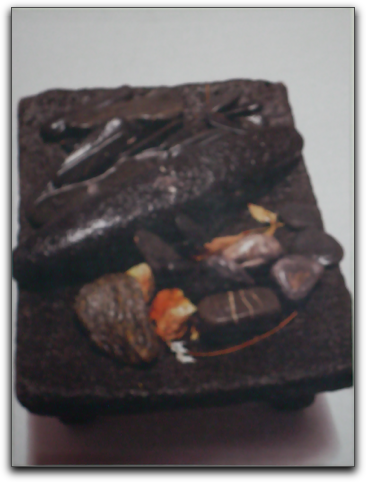
We continued to the spot that Luis had marked on our map as a synagogue. The security there was intense. It turns out that a Jewish/Holocaust museum (officially marked on the map in a slightly different location, is located on the upper floors, above the synagogue: Museo Tuvie Maisel. This museum is essentially one large hall that displays a few items related to Jewish life cycle and holiday ceremonies and tells a tiny bit of the history of the local community while also explaining the Shoa and the establishment of the State of Israel. Because Debbie had not taken any ID with her, she was not allowed to enter. Mark did explore a bit and found someone who spoke a bit of English to explain what we were looking for. Mark explained Debbie's interest in chocolate but gleaned no special info. He also saw a lapel button in a display case and explained his collection. That button [Freedom for Soviet Jewry - СБОВДА] is #0197 in his collection.
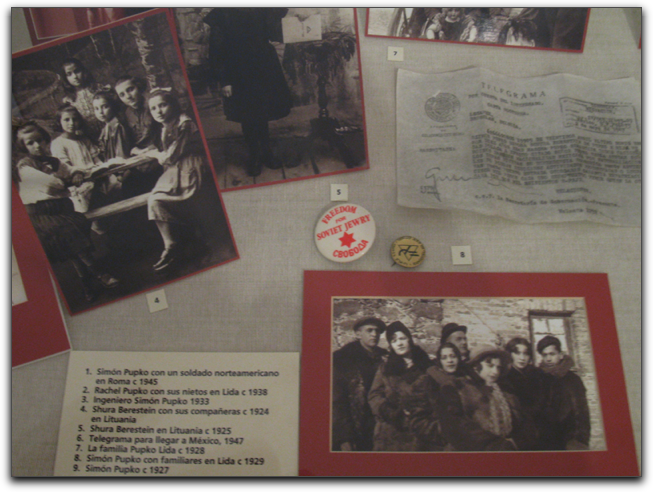
He could find no explanation for the presence of the button in the display case.
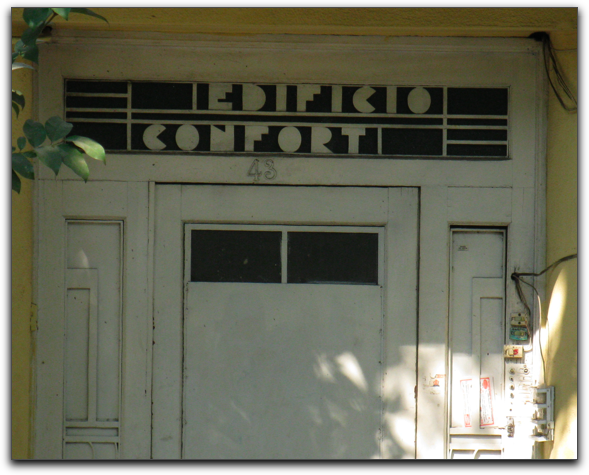
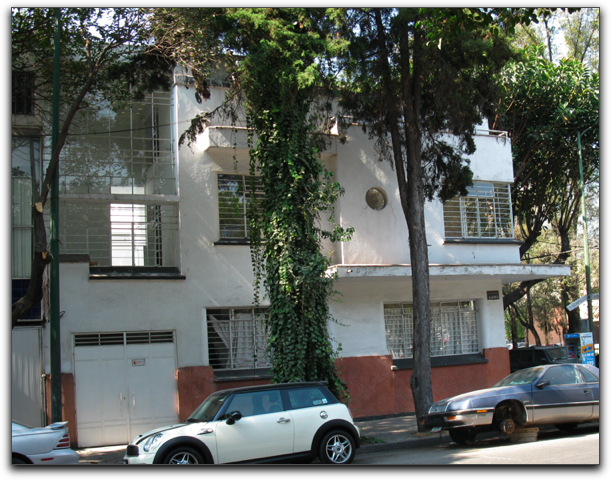
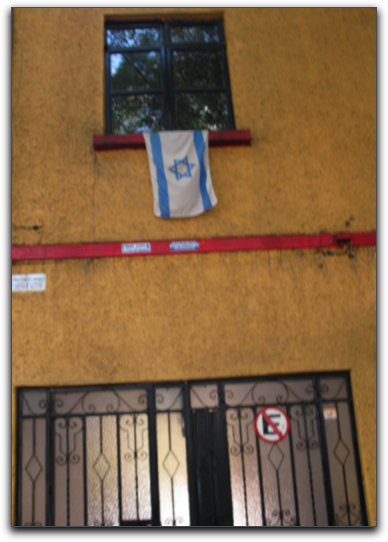
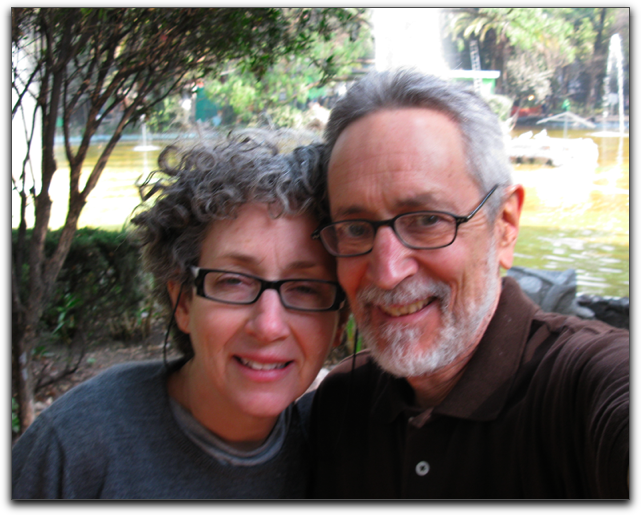
When we have been traveling on our own in recent years, we have had our own set of wheels. This is the first time we've functioned exclusively on our own two feet and used public (and taxi) transportation. With the volatile price of gas such an issue recently, we wondered how much it cost locally.
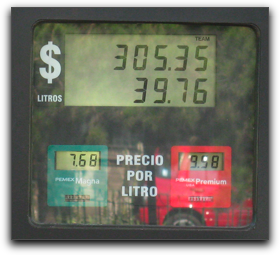
We could not tell as we walked as it required at least two conversions:
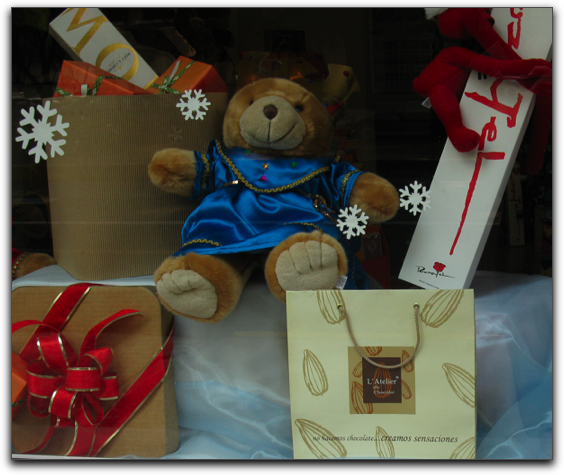
We kept walking past a few trendy restaurants. At one, a man had his shoes shined while he ate/ordered his lunch!
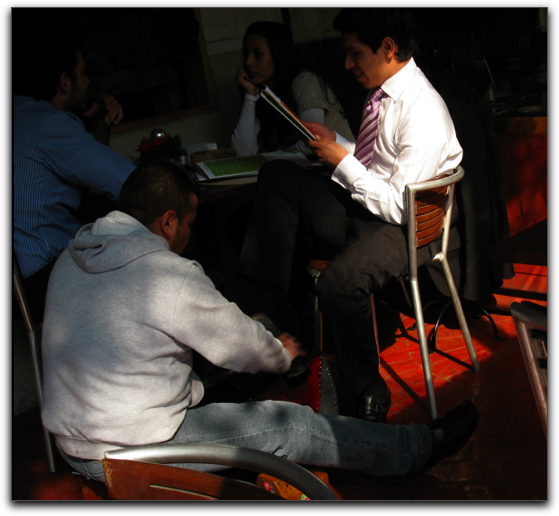
Another had a name that seemed only out of place.
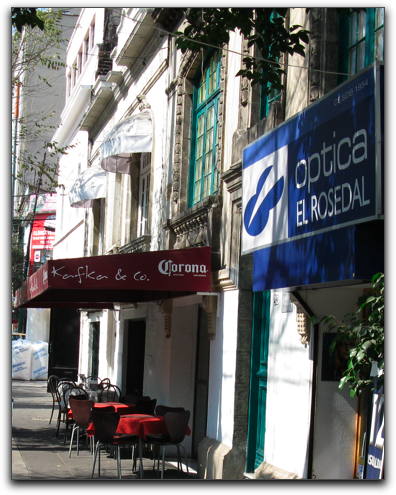
Many of the streets in the areas of Roma and Condesa are named for places far away:
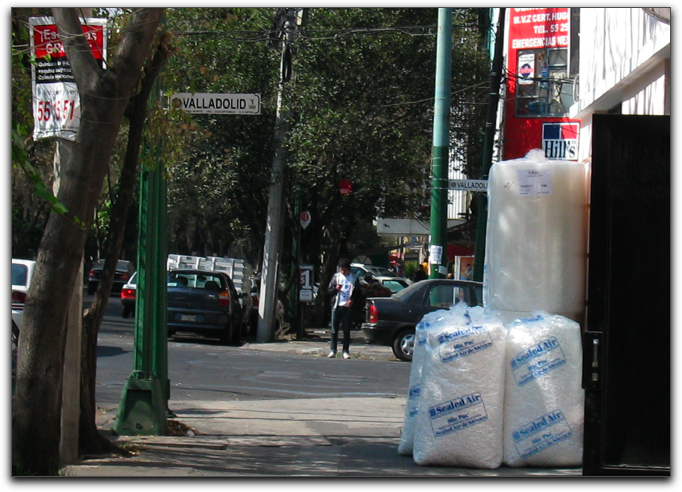
We saw a variety of stenciled graffiti on the walls. While HavanYork appears to have an image of Obama in a Mao hat, their Web site (YouTube video and MySpace) seems to deal primarily with images of Havana that New Yorkers have and vice versa.
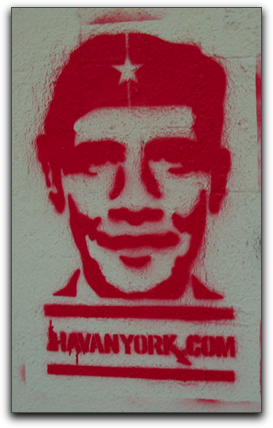
We have no clue what these others are about, but, they are rather elaborate.
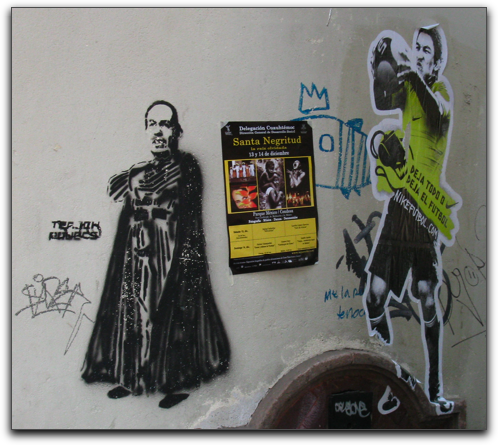
We arrived at what (according to the map) was (or should have been) an entrance to the park we had hoped to visit, only to learn that it also was closed on Mondays!
We happened to be near a nice hotel. The concierge there helped us find our way to the Metro to return via an artisan market. The Metro was crowded and a bit anxiety producing because we had heard that we should be very careful. However, it was easy to follow the color coded system we found our way back... but not directly to the market. Along the way in search of the market, Mark found a leaning pile of bricks that he thought would bring back fond memories for Loren.
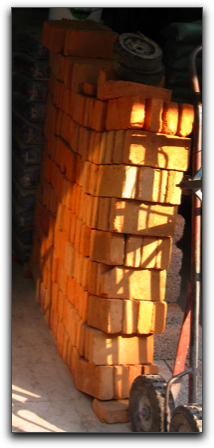
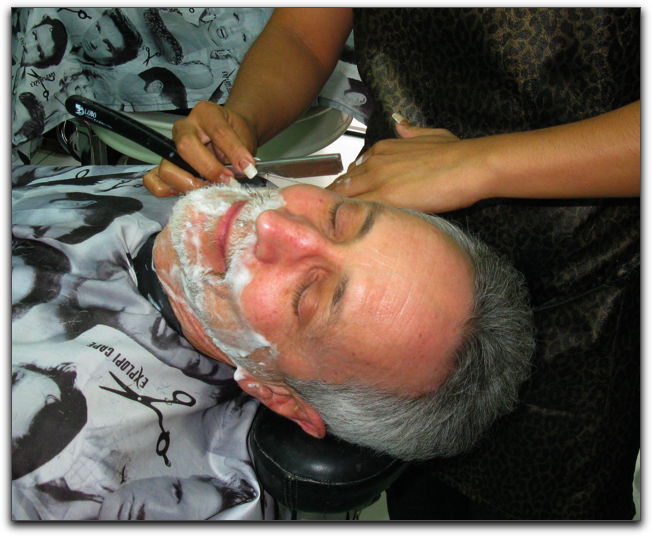
We finally found the artisan market. Most of the merchandise was familiar to us from our explorations in and around Oaxaca (and on the streets of the city itself). Rather disappointing.
Exploring the streets at what appeared to be rush hour, we found our way back to the very center at the Belles Artes building. We knew that we wanted to go in and see the murals there, if not also see a performance, if possible. No performances were scheduled till after our departing flight. We made plans to return to see the museum. We took our photo outside
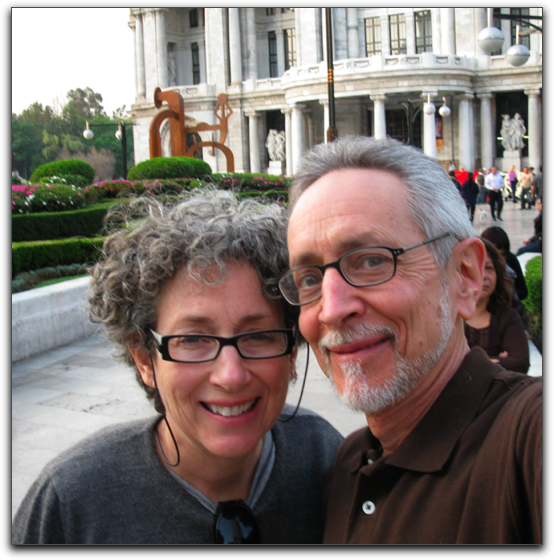
and continued on, appreciating building facades along the way. We learned later that this first building "Casa de los Azulejos" is deservedly famous and returned to eat breakfast there the next day.
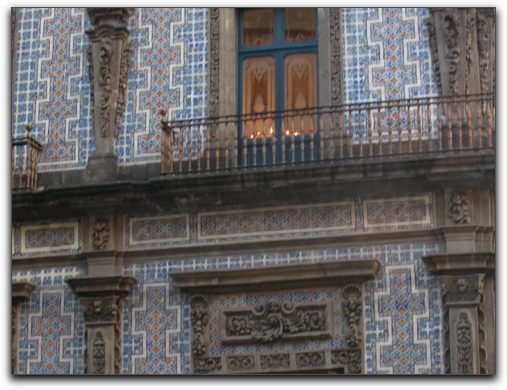
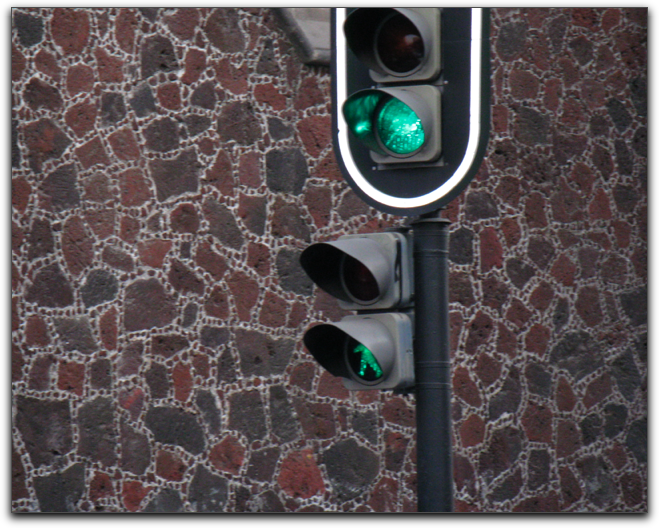
We ate our dinner at another of the Luis-designated locations: "Café Tacuba". The food was good and we enjoyed the murals that depict the history of chocolate in Mexico. After dinner we walked along Tacuba street, filled with shoppers to the Zócalo of Mexico City. The area was packed with street vendors, merchandise spread on blankets on the pavement in front of the cathedral. Christmas lights shone from every building.
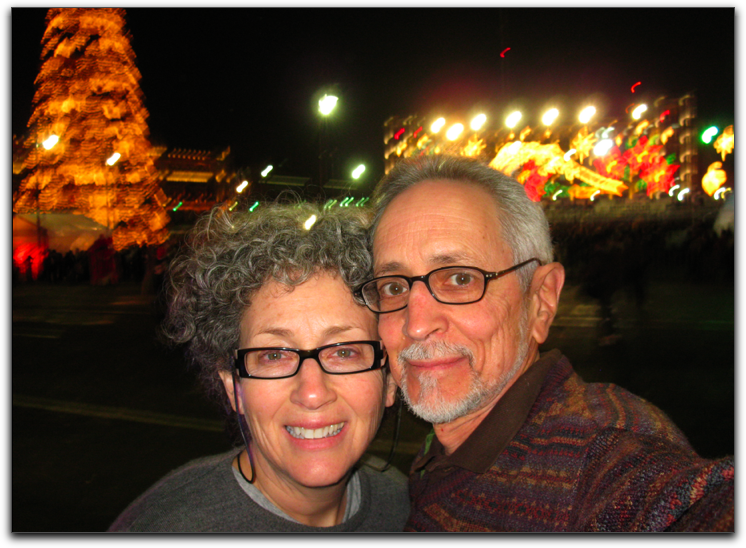
The Zócalo itself was transformed into an ice rink. (We spent the day and the evening with no more than sweaters.)
Many people wore Keffiyehs which we saw for sale in Oaxaca and in many locations in Mexico city.
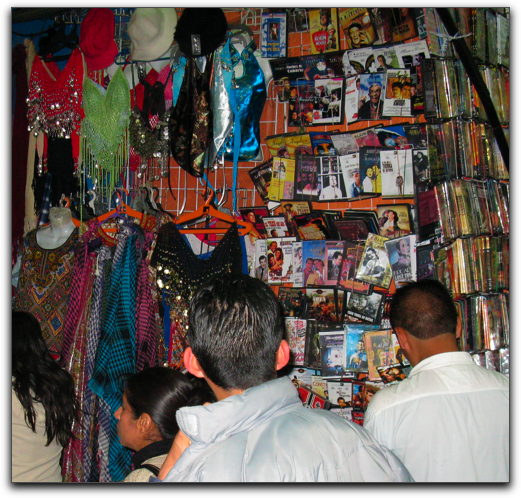
Mark is interested in the anthropology/sociology/politics of the dispersion of this bit of Palestinian attire. That's a subject for a much bigger project.
Shortly before we left New York, Mark had seen a story:
LOS ANGELES, Dec 12 (Reuters) - A nude model resembling the Virgin Mary on the cover of the Mexican edition of Playboy magazine, published only days before a major Mexican festival dedicated to the mother of Jesus, prompted the company's U.S. headquarters on Friday to apologize.Mark had asked Miriam if they had bought a copy (of course not), but he was lucky enough, at least, get a photo of the cover where it was available for sale on one of the local news-stands.
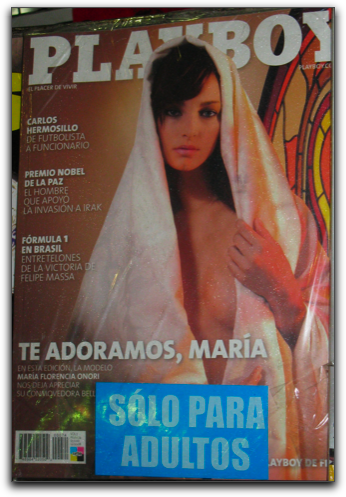
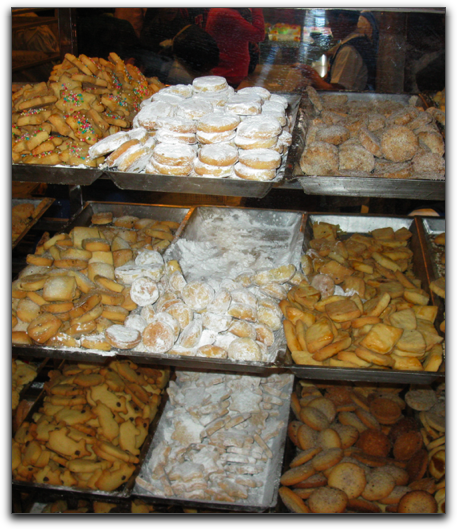
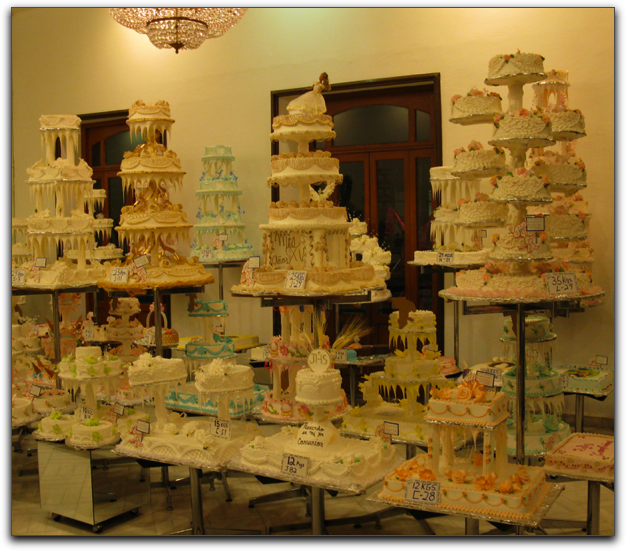
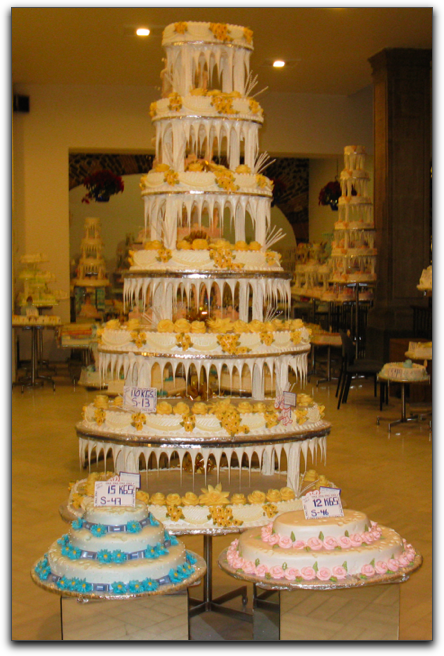
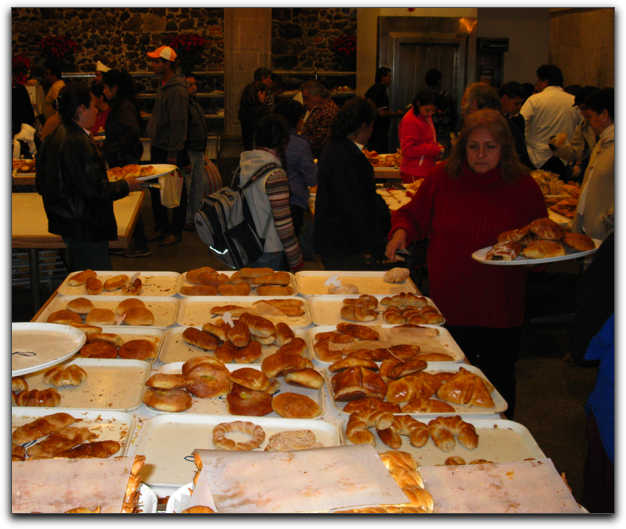
We continued our walk back to the hotel along Calle Independencia. Mark was struck by the number of street names dedicated to political/historical events. Growing up in Los Angeles, near Jefferson Ave. which was south of Adams and Washington, the use of names of leaders, or famous people (Sepulveda, Pico, even Burnside) was not unfamiliar to us. However, we could not remember the names of any streets named for events (except Olympic Boulevard, which dates from the 1932 Olympics in Los Angeles, but this is not a political event).
